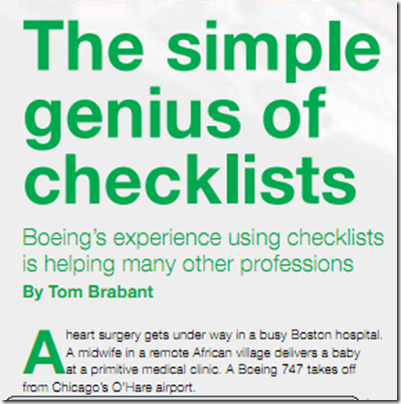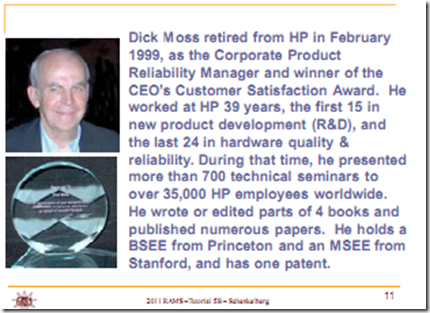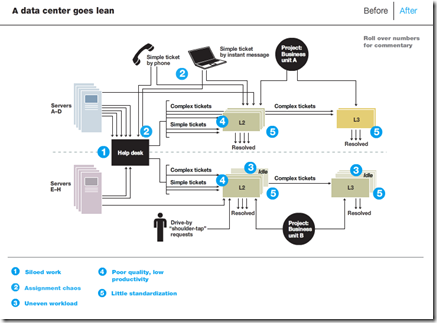Reading the Checklist Manifesto which I posted about last month, there is a discussion how the author Atul Gawande contacted Boeing to find a checklist expert.
Here is the Boeing pdf about Boeing's checklist expertise.
Along with his primary responsibilities, Boorman is the contact for organizations outside of aviation that want to benefit from
checklists. He has worked with the FBI, the American Society
of Radiation Oncologists, Northwestern Memorial Hospital in
Chicago and the Washington State Hospital Association.
One of the most important beneficiaries of Boeing’s checklist
knowledge is the World Health Organization. Using ideas learned in
part from Boorman and the Flight Technical & Safety team, a study
of eight hospitals around the world showed that major complications for surgical patients decreased 36 percent after the introduction of checklists. Deaths fell by 47 percent. The World Health
Organization now is creating and distributing checklists worldwide
I think I am going to reach out to some people who would be interested in meeting with Boeing's checklist expert, and organize a meeting.
Living in the Seattle area, I am surrounded by Boeing people and my kids are fans as well. Here is an old picture from their photo shoot for a Boeing Store poster.











